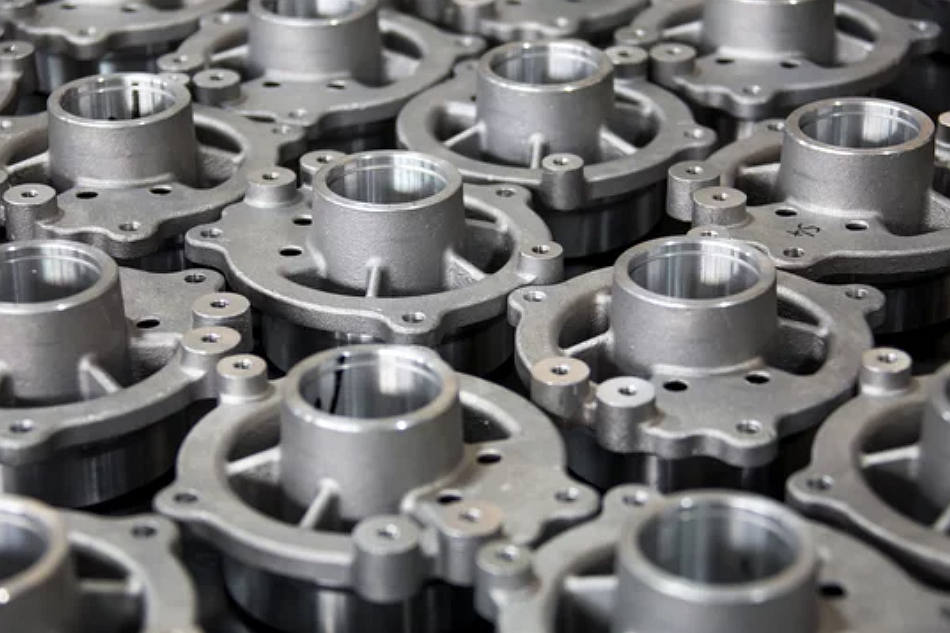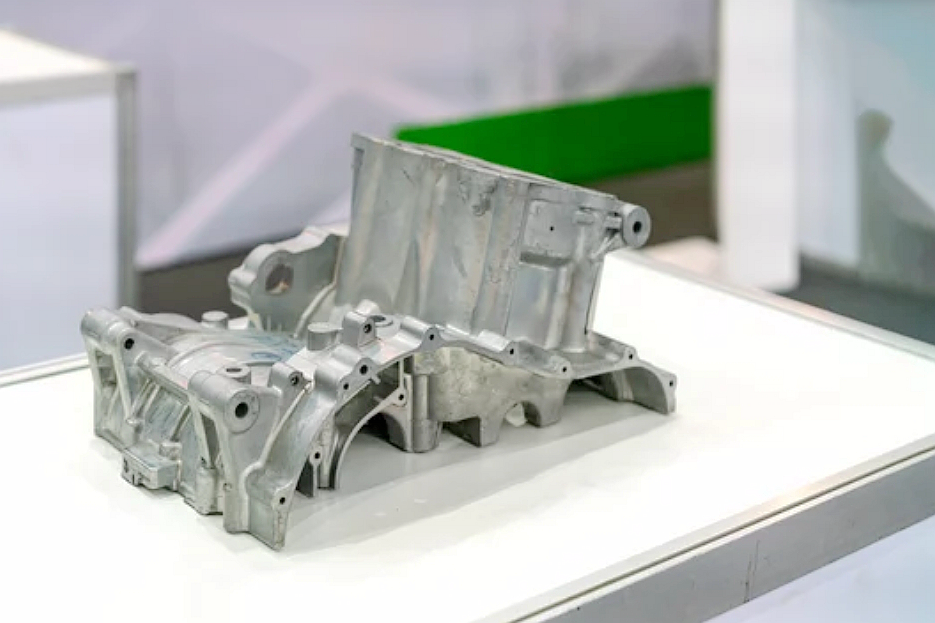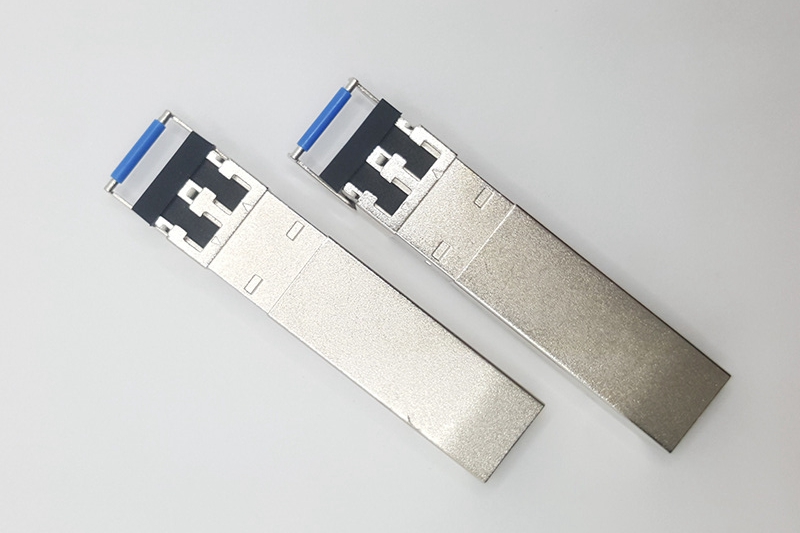Defects in Sand Castings: Causes and Prevention in Metal Foundries
Sand casting is used across many industries to produce metal components with complex geometries. Custom sand casting services can offer higher complexity than die casting services but lower productivity. However, defects can occur during the molding, pouring, and solidification processes that compromise the quality and performance of castings. Identifying defects' main categories, causes, and remedies is critical to improving casting yield and reliability.
Gas Porosity Defects
One of the most prevalent defects in sand castings is gas porosity, which consists of voids and holes formed by trapped gases during the pouring and solidification of the metal. Common causes of gas porosity include:
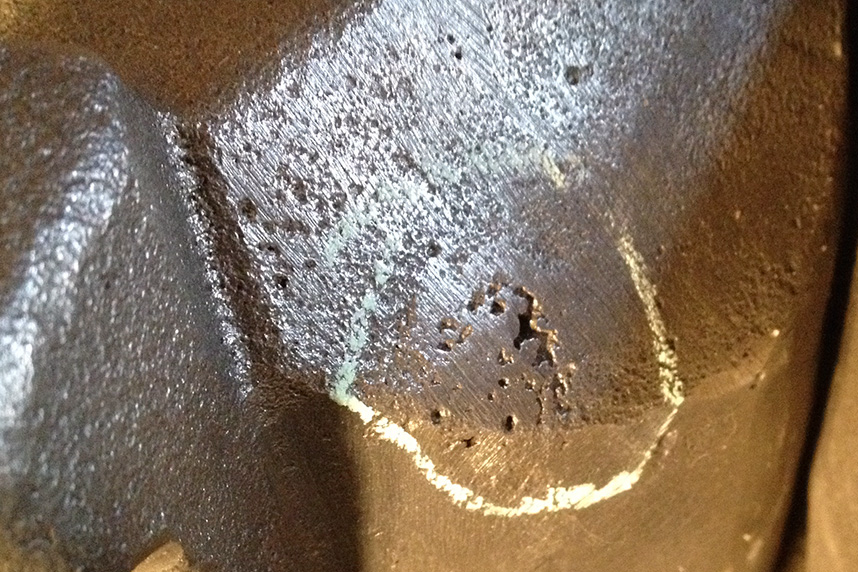
- Inadequate venting - Restricted vents in the mold prevent gases from smoothly escaping the cavity as it fills with molten metal. Deep impressions and fine details often need additional venting to avoid this issue.
- Low pouring temperature - When the molten metal is too cold, it begins to solidify faster, which traps gas bubbles before they can fully vent from the mold. Maintaining proper superheat temperatures is critical.
- Turbulent filling - High pouring velocities or excessive mold coating heights generate turbulent splashing as the mold fills, introducing air pockets into the metal stream. Controlled, gentle filling minimizes this turbulence.
- Core off-gassing - Sand cores release binder gases during pouring, which become trapped if the core is not fully baked prior. Adequate core curing and conditioning are essential.
- Poor mold quality - Contaminated, low strength, or collapsible mold materials erode into the metal, creating pores. Proper mold media selection, mixture procedures, compaction, and control of environmental conditions are required.
Shrinkage Defects
As castings cool and shrink, localized hot spots can form that do not feed properly from the riser system, creating shrinkage defects. Almost all materials that shrink in volume upon cooling develop natural shrinkage defects. Common factors leading to shrinkage cavities and sinks include:
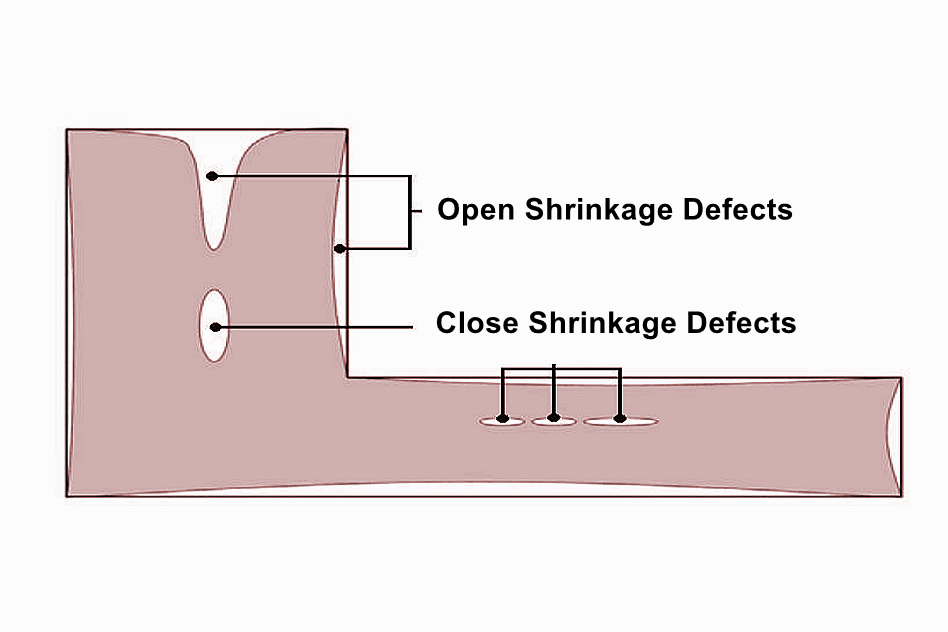
- Restricted feeding - Inadequate riser volume and improper placement prevent hot spots from being fed liquid metal as the part solidifies. More generously sized risers are often needed.
- Narrow sections - When thicker sections are near thinner areas, the thinner sections cool more rapidly, causing hot tears and voids. Transition fillets can help prevent this.
- Poor gating - Unbalanced runner designs lead to uneven velocity and incomplete mold filling, making certain areas prone to shrinkage. Multi-ingate systems may be required.
- Alloy issues - Higher shrinkage alloys require extra feeding to compensate for volume loss. Using alloys with less shrinkage tendencies can minimize the problem.
Inclusion Defects
Inclusions consist of trapped foreign particles within the solidified casting metal matrix. They act as stress concentrators and crack initiation sites. Common origins are:
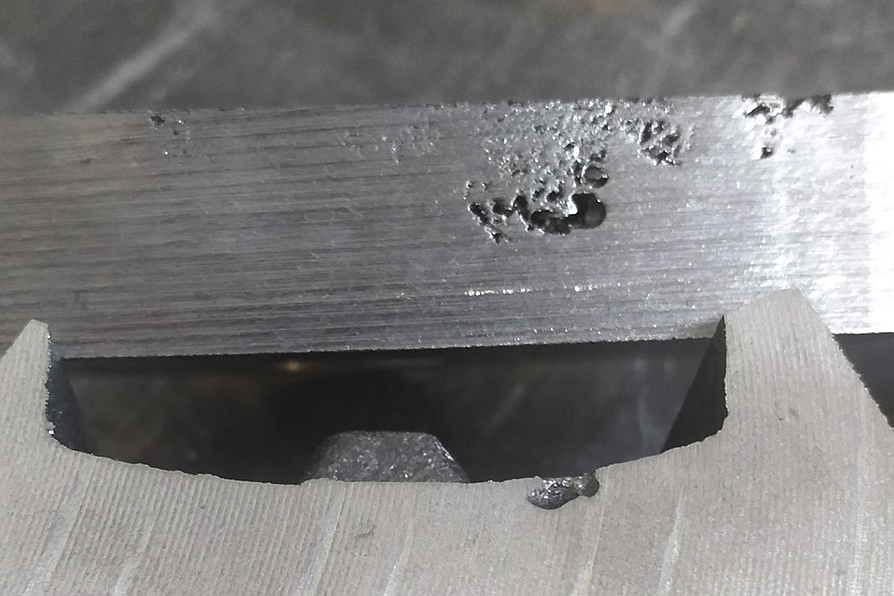
- Sand inclusions - Erosion of mold walls introduces sand grains into the pouring stream. Clay-bonded sands are particularly prone to wash out.
- Slag/dross - Entrained oxide impurities from the molten metal transfer vessels contaminate the pouring metal and become trapped.
- Refractory debris - Ceramic particulates from degraded launders, runners, or crucible lining material break loose and are incorporated.
- Metallic inclusions - Undissolved charge materials, eroded tools, or debris from prior castings mix in during melting and pouring.
- Mold additive debris - Powder coatings, exothermic sleeves, or insulation layers can delaminate and flake off into the cast part.
Cold Shuts
Cold shuts appear as planar seams or laps on the surface or interior of castings. They form when converging metal fronts do not fuse correctly upon meeting during solidification:
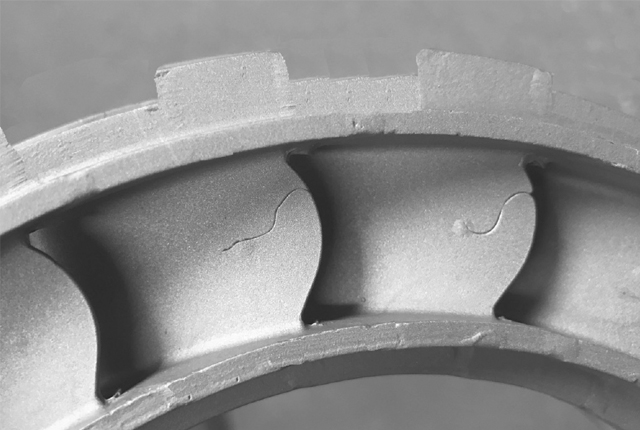
- Low pouring temperature - Increased viscosity at lower temperatures impedes the fluidity required to prevent cold shuts, especially in thin sections.
- Hindered venting - Pockets of trapped gases prevent intimate contact between the merging fronts. Enhanced venting is needed.
- Alloy sensitivity - Certain alloy compositions are prone to viscous flow issues that inhibit fusion between fronts. Changing alloys can help.
- Excessive opening - Large mold cavity openings lead to difficult-to-join widely spaced flow fronts. Minimizing gates promotes better fusion.
- Poor gating/rising - Unbalanced filling from the sprue and runners causes delayed convergence, leaving cold shuts.
Hot Tearing Defects
Hot tears manifest as partial cracks forming in the semi-solid state when stresses exceed the low material strength. Typical causes include:
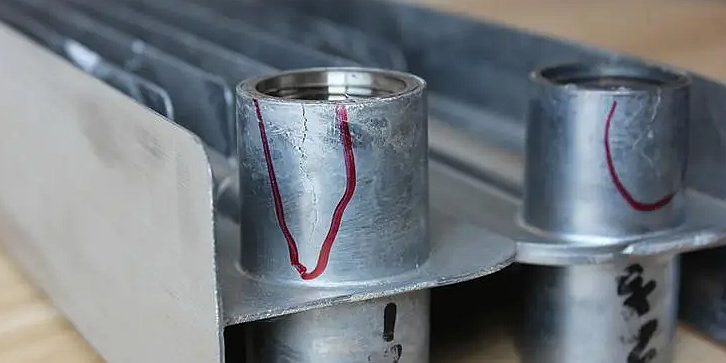
- Restraint from the mold - The rigid mold prevents free contraction as the casting solidifies, inducing stresses. Reduced mold hardness can help minimize this.
- Alloy cracking tendencies - Certain alloys are prone to solidifying over a wide range, promoting partial solidification cracks. Brittle phases also contribute.
- Thermal shock - Contact with riser covers, chaplets, or tooling while still hot introduces large thermal gradients and cracking. Gradual, uniform cooling is ideal.
- Rigid cores - Expansion constrained by rigid sand cores embedded in castings can initiate hot tears during solidification. Collapsible cores prevent this.
By understanding the wide range of defects and their root causes, foundries can systematically correct issues through improved molding, rising, gating, metal treatment, alloy selection, and process control for casting quality optimization.
Custom Sand Casting Service in Neway
In a world fueled by innovation, Neway remains steadfast in honoring the art of custom sand casting, its legacy spanning an astonishing three decades. Heralded for their bespoke non-standard parts, they exude mastery across diverse materials – metal, ceramic, and plastic injection molding. Neway's precision casting repertoire boasts die casting, foundry casting, and paraffin casting services, each an ode to craftsmanship. Amidst the cutting-edge marvels, they cherish their sheet metal processing, staying rooted in tradition even as they embrace modernity. And what better time to forge new bonds than in 2023, when Neway extends an irresistible 20% discount to new customers on their inaugural order? Choose Neway for a timeless blend of traditional artistry and groundbreaking innovation!
